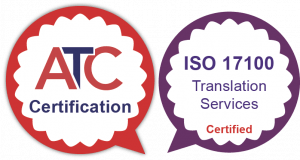I am sure everyone knows someone who speaks another language, and they can be an invaluable asset to you and your company when one of your German clients comes to you with a query in, well, German. After all, that’s why I trained as a linguist, as I wanted to understand what others were saying and communicate with them directly and in the best way possible.
But that doesn’t mean that your German-speaking colleague should be the go-to person when you need to translate your product packaging, website or whitepaper into German. Here are my top 5 reasons why:
- Formal training
Let’s face it, you wouldn’t use your next door neighbour to help you with the extension to your house which you’ve been considering. Sure, they can use a screwdriver and help you with other, fairly simple aspects, but will the conservatory be water tight? Translators aren’t just bilingual colleagues: they generally have years of experience and academic training in the industry, and know the difference between a dangling preposition and false friend (in English, at least). They will have also been taught how to look at a text as a whole and how to render it in the other language, rather than just translating it word by word and sentence by sentence. And it is that which can make all the difference, especially when it comes to your marketing materials and texts which are designed to impress. Your colleague will probably have an intimate knowledge of your products, but the professional translator will have experience in a similar sector and know exactly how to find out the right terminology for you. Of course, it will take a little time for them to become familiar with your preferred style of writing, but having that external resource at your finger tips will quickly become indispensable. - Lack of tools
As in any other industry, a good workman should always have the right set of tools, and know how and when to put them to best use. For us in translation, that means a CAT (computer assisted translation) tool, glossaries, any number of specialist dictionaries and access to the right language resources and forums. Without these basic resources to hand, it is very difficult for your colleague to check the difference between two possible translations and decide which would be the most appropriate. What’s more, when it comes to dealing with InDesign files, HTML pages, XML and any other more complex and structured file formats that you might be working with in production, it’s likely that getting your colleague to do the translation would actually cost more in man hours to rectify problems than it would have cost to get a company to typeset in a foreign language in the first place. - Speed
Professional translators’ time is valuable, so they know how to translate in the most efficient way possible. Can your colleague dictate to their PC in another language to speed things up? Do they have the necessary quick and easy access to the different accents used in the language or even the right keyboard? What if a paragraph of text in a new document had already been translated in a previous document, but your colleague didn’t know about this? Wouldn’t it be nice if this paragraph was automatically re-used, speeding up the overall translation process? And that’s before you have even taken into account the fact that your colleague needs to focus on his/her own daily tasks in addition to any translations which you may be asking of them. - Consistency and coherence
So your colleague has managed to translate your website, but have you noticed that they’ve used 4 different translations for the same word? There’s nothing more frustrating than a change of tone or terminology when you’re talking about the same thing. This just makes potential customers feel more detached from your content and product, and therefore less likely for you to make a sale. Translators and project managers are sticklers for consistency and, when coupled with the power of specialist tools and a solid background in them, we can quickly check across hundreds of previous translations for a preferred term and implement it immediately in the current translation. You can bet that your colleague would need to spend hours going through existing files to find issues like this. - Capacity
It’s time to implement that new brand image. Your marketing department and designers are busy making those final changes to the English copy, while you need to arrange the same again in several languages. In addition to the speed issues mentioned above, there will also be the inevitable administrative side for you to consider. While managing the translation of a couple of documents may be fine, when scaling this up to each document of your new marketing collateral or the whole website, this can cause real headaches for you. Project managers know instinctively where they can place those large translation projects, and how to approach splitting a project among 10 translators when it is absolutely critical to have that reduced-time turnaround. They know when and where this division of work is going to cause problems, and have a funny way of being able to deal with it as (if not before) it happens and in the most efficient way. Imagine finding, explaining and getting those changes made across that many documents in more than one language!
I’m sure these few reasons only scratch the surface in terms of the value our clients take away from developing a close partnership with an external language service provider such as Comms. If a similar approach to your translation requirements has or has not worked for you in the past, we would be very interested to hear your thoughts so that we can optimise and tailor how we work with our clients in their individual sectors.

